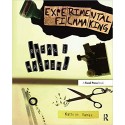A book on the practice of experimental film-making by Kathryn Ramey
 Our terms and conditions of use
Our terms and conditions of use
(edit with the Customer Reassurance module)
 Delivery policy
Delivery policy
(edit with the Customer Reassurance module)
Become a master in the influential, diverse, and highly innovative field of experimental filmmaking. Harness the little-known techniques and subtle aesthetics required for this imagination-driven art form.
For the first time in a single volume, Kathryn Ramey has written a thorough, hands-on guide to the craft and processes of experimental filmmaking, showing you step-by-step the material methods that will help you begin an experimental media practice. From these lessons, following the tradition of Stan Brakhage’s A Moving Picture Giving and Taking Book and Hell Hill’s Recipes for Disaster, you’ll learn to take materials apart and put them together in new ways, use products for purposes other than those intended by their manufacturers, and free yourself from the constraints of conventional media. Experimental Filmmaking provides:
-Full-color film stills and illustrations demonstrating various experimental filmmaking techniques
-Step-by-step tutorials on hand-processing motion picture film, direct animation methods, optical printing, making your own microphones and other sound experiments, glitch art, and much more
-Explanations of the historical, theoretical, and socio-political backgrounds of various experimental filmmaking movements and styles
-Advice on how to locate experimental filmmaking communities in your region, as well as how to show and distribute your work
-Sidebar interviews with filmmakers currently working in the genre that offer context and direction for your own projects
-A companion website (www.focalpress.com/cw/ramey) featuring video examples from numerous films for inspiration and emulation
Whether you’re an aspiring experimental filmmaker or mainstream practitioner who wants to incorporate alternative techniques in your films, Experimental Filmmaking: Break the Machine gives you the tools you need execute your most daring cinematic endeavors!
Table of Contents
Introduction; First There Was Sound; Film/Video/Digital Video Basics; Destruction/Creation/Hacking: Manipulating the Found Image; Making Something New; Darkroom Techniques; Re-purposing Film Technology; Para-cinema; Optically printing at Home; Exhibiting and Distributing Experimental Work






